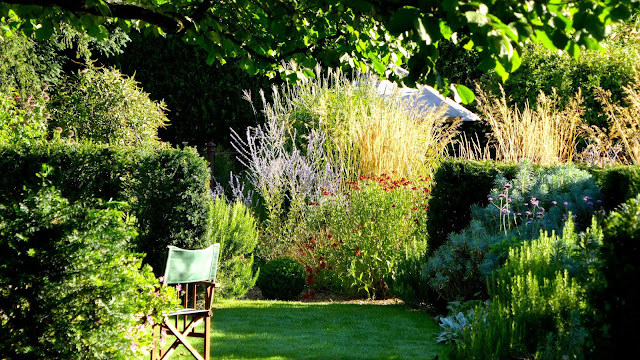 |
| Turner |
Reflecting on having visited three local art exhibitions this week, I thought to put down what I think about art.
First, my credentials in talking about this at all: I am not an artist, although I have been a photographer since my 20s and have long had an interest in gardening and garden design.
I studied History of Art under Graham Drew at Winchester and loved it. Since then I have visited many of the world's great galleries - some many times for different exhibitions - including in the UK the National Gallery, the National Portrait Gallery, the Tate, the Tate Modern, the Royal Academy, the Wallace Collection, the Saatchi, the V&A, and many smaller galleries such as the Tate St Ives as well as exhibitions such as the St Laurent / Pierre Berge collection put on by Christies. Abroad, I know the Louvre, the Chagall and Matisse Museums in Nice, the Prado, the Ufizzi, Topkai, MOMA, the Art Gallery of New South Wales, the National Palace Museum of Taiwan, the National Museum and the Palace Museum, Beijing, MOMAT (the Museum of Modern art, Tokyo) and the Miho Museum near Kyoto.
My interest in art comes fundamentally from its ability to induce a feeling of transcendence, of awe, of reverence, of amazement, of significance. William James in 'The Varieties of Religious Experience' wrote: “Our normal waking consciousness… is but one special type of consciousness, whilst all about it, parted from it by the filmiest of screens, there lie potential forms of consciousness entirely different… No account of the universe in its totality can be final which leaves these other forms of consciousness quite disregarded.”
Viginia Woolf expressed it thus: ...'behind the cotton wool is hidden a pattern; that we — I mean all human beings — are connected with this; that the whole world is a work of art; that we are parts of the work of art. Hamlet or a Beethoven quartet is the truth about this vast mass that we call the world. But there is no Shakespeare, there is no Beethoven; certainly and emphatically there is no God; we are the words; we are the music; we are the thing itself'.
Or as Saul Bellow put it in his Nobel Prize acceptance speech “Only art penetrates.. the seeming realities of this world”
Or as Saul Bellow put it in his Nobel Prize acceptance speech “Only art penetrates.. the seeming realities of this world”
I love and look for this glorious penetration, this heightening of consciousness, this revelation and this significance. I don't often find it.
I realise that my somewhat over-blown thoughts above are not really appropriate to deal with 'everyday' art - the kind sold in local galleries and hung hopefully in church halls - and it's somewhat unfair to hold that kind of art to the standards of the old and recent masters (although I wish I would ove meet someone who lived for their art and at least aspired to that standard).
To help me with this, and thanks to Maria Popova (again), I recently discovered Henry Miller's 'To Paint Is To Love Again', which he reads in its entirety here. One passage has been especially useful:
'To paint is to love again. It’s only when we look with eyes of love that we see as the painter sees. His is a love, moreover, which is free of possessiveness. What the painter sees he is duty-bound to share. Usually he makes us see and feel what ordinarily we ignore or are immune to. His manner of approaching the world tells us, in effect, that nothing is vile or hideous, nothing is stale, flat and unpalatable unless it be our own power of vision. To see is not merely to look. One must look-see. See into and around'.
I realise that my somewhat over-blown thoughts above are not really appropriate to deal with 'everyday' art - the kind sold in local galleries and hung hopefully in church halls - and it's somewhat unfair to hold that kind of art to the standards of the old and recent masters (although I wish I would ove meet someone who lived for their art and at least aspired to that standard).
To help me with this, and thanks to Maria Popova (again), I recently discovered Henry Miller's 'To Paint Is To Love Again', which he reads in its entirety here. One passage has been especially useful:
'To paint is to love again. It’s only when we look with eyes of love that we see as the painter sees. His is a love, moreover, which is free of possessiveness. What the painter sees he is duty-bound to share. Usually he makes us see and feel what ordinarily we ignore or are immune to. His manner of approaching the world tells us, in effect, that nothing is vile or hideous, nothing is stale, flat and unpalatable unless it be our own power of vision. To see is not merely to look. One must look-see. See into and around'.
I will henceforth adopt such a kindly and love-infused eye for the art that I see around me every day, while keeping the works of the masters always as a bath of pure joy.








































